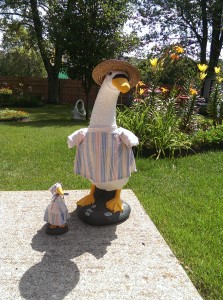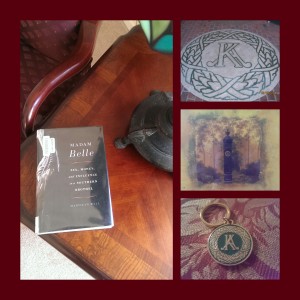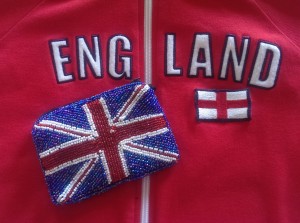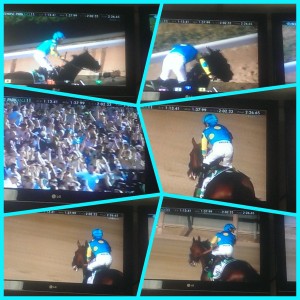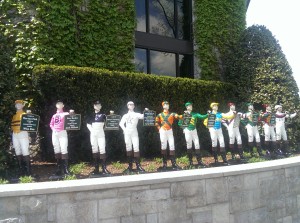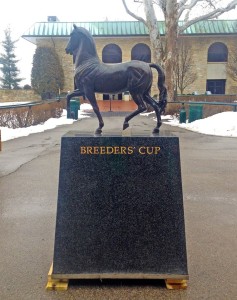I am horsing around today for sure. I got an early start this morning at the Thoroughbred Center watching the horses breeze and petting them and a barn cat. Tonight, I am attending Downs After Dark at Churchill Downs for some live racing, including some graded stakes. In between, I am watching the Mother Goose Stakes at Belmont Park. It is a busy day for this blogger and I will share some trip photos and stories later but now let’s focus on the Mother Goose Stakes.
The Mother Goose Stakes started in 1957 and was named for Mother Goose, herself. She had the distinction of being the winner of the Breeders’ Cup Futurity in 1924. The Grade 1 stakes race is 1 and 1/16 miles on dirt. It is currently held at Belmont Park in New York, where we recently saw American Pharoah win the Triple Crown. The Mother Goose is for 3 year old fillies. The purse is $300,000. At different periods, in our nation’s history, this race has been considered part of the filly triple crown or triple tiara. The other legs were usually the Acorn and the Coaching Club American Oaks. Those two races and the Alabama Stakes are currently considered the New York Triple Tiara. The fastest and largest margin to win the Mother Goose was Rachel Alexandra. She also won the Kentucky Oaks and the Preakness. She holds the record for the largest win at the Kentucky Oaks too. She was the first filly to win the Preakness in 85 years. She has the record for speed at the Mother Goose and was less than a second from Secretariat’s speed record. Tonight at 5:28 pm, the Mother Goose Stakes will be race 9 at Belmont. The Acorn and Coaching Club American Oaks won’t take place until late July and August. It has only been 3 weeks since the Acorn. Curalina won the Acorn Stakes and she will not be participating in the Mother Goose. In fact, only one horse in this stakes race was entered at the Acorn. The 10 featured horses are:
- Embellish the Lace
- Include Betty
- Hot City Girl
- Munasara
- Chide
- Pleasant Tales
- Money’soncharlotte
- Danessa Deluxe
- Eskenformoney
- Wondergal
Embellish the Line won both of her 2 starts this year. This will be her 1st stakes race. Include Betty came in 8th at the Kentucky Oaks and 2nd in the Black-Eyed Susan stakes. She is the horse with the experience to win this, having 9 career starts including 4 graded stakes, 1 of which she won. Hot City Girl is one of only 2 New York bred horses in this race, the rest are from Kentucky. She has 7 starts but just 1 win, back in January, and none of her races have been graded stakes. Munasara is my favorite. She is undefeated but she has had just 2 entries. The last win was at Belmont Park. I like her tainer Kiaran McLaughlin and her jockey John Velazquez. Her jockey won the Mother Goose last year on American Champion 3 Year Old, Untapable. Chide has won 2 of her 3 starts. Her last two races were at Churchill Downs. Pleasant Tales has been in a total of 4 races at Churchill, of her 8 starts, and she won her last race there. Moneysoncharlotte came in lucky 13 in the Kentucky Oaks. That was her last race of 7 career starts. Danessa Deluxe was 4th in the Black-Eyed Susan when she had John Velazquez for a jockey. Tonight, Manuel Franco will ride her. She has not won in 2015 but she has 7 lifetime starts, with the last 3 being graded stakes. Eskenformoney came in 10th in the Kentucky Oaks. She has had 10 starts with 3 of them being graded. In those graded stakes she was third and then 2nd before her Kentucky Oaks race. Finally, Wondergal is considered the favorite. She is the other New York filly. She was 3rd in the Acorn as well as the 14 Hands Winery Breeders’ Cup Juvenile Fillies race. 5 of her 6 starts were graded stakes.


